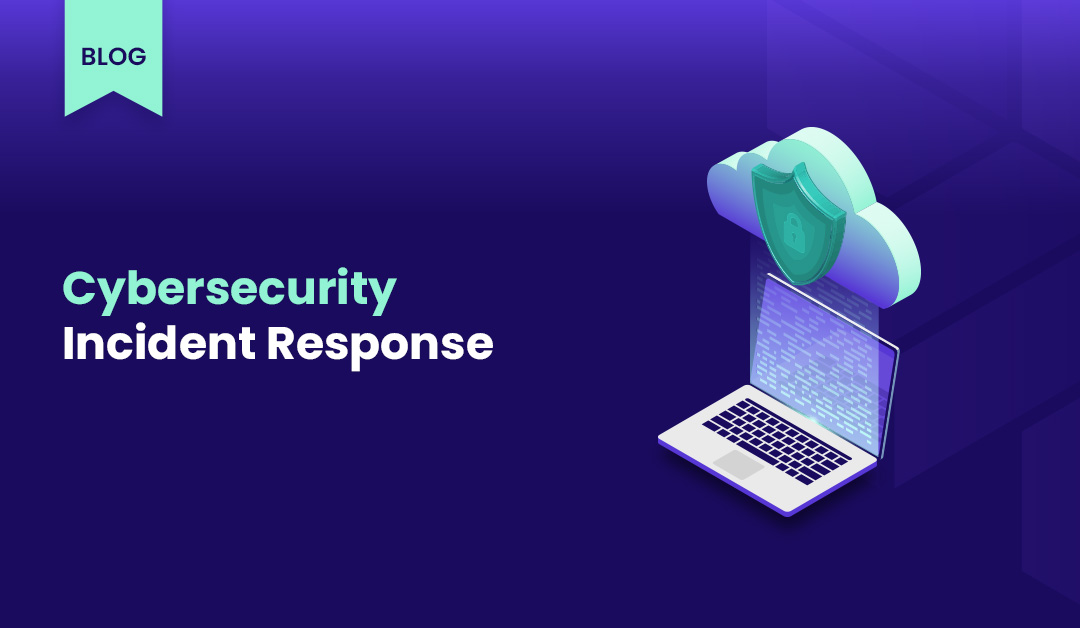Creating an Effective Cybersecurity Incident Response Plan: A Comprehensive Guide
In today's digital world, cyber threats are on the rise. A strong cybersecurity incident response plan is essential to detect, respond to, and mitigate security breaches efficiently. This guide covers key steps to create, implement, and maintain a plan that protects your organization's data and operations. You'll learn how to establish clear protocols, define roles, and take immediate action during incidents, ensuring minimal damage and continuity.
Author
Date
Category
All Categories
- AI-powered security
- Attacks & Threats
- Cybersecurity
- Hybrid Cloud
- Network
- Network Firewall
- Network Protection
- News
- Remote Workforce
- Security
- Zero Trust
Contents
Popular Posts
Product
Join the Newsletter

In today’s digital world, cyber threats are on the rise. A strong cybersecurity incident response plan is essential to detect, respond to, and mitigate security breaches efficiently. This guide covers key steps to create, implement, and maintain a plan that protects your organization’s data and operations. You’ll learn how to establish clear protocols, define roles, and take immediate action during incidents, ensuring minimal damage and continuity.
What is a Cybersecurity Incident Response Plan?
A cybersecurity incident response plan is a framework that guides an organization’s actions during a security breach or cyber attack. It outlines procedures, protocols, and responsibilities for detecting, analyzing, and responding to different types of incidents. The plan aims to minimize the impact on business operations, protect data, and ensure a swift return to normal functioning. It serves as a playbook for organizations, covering various scenarios like malware infections, data breaches, denial-of-service attacks, and insider threats. By providing clear guidelines and predefined steps, the plan enables teams to act quickly and decisively, reducing confusion and missteps during high-stress situations.
Why Do You Need a Cybersecurity Incident Response Plan?
Developing a cybersecurity incident response plan is crucial for organizations of all sizes and industries. The rapidly evolving threat landscape and increasing sophistication of cyber attacks make it essential to have a proactive approach to incident management. Here are several compelling reasons why your organization needs a robust incident response plan:
- Rapid Threat Mitigation: A well-designed plan enables quick identification and containment of security incidents, reducing the potential impact on your systems and data. By having predefined procedures in place, your team can respond swiftly and effectively, minimizing the window of opportunity for attackers.
- Minimized Financial Losses: Cyber attacks can result in significant financial losses due to system downtime, data recovery costs, and potential legal liabilities. An incident response plan helps mitigate these losses by streamlining the recovery process and reducing the overall impact of security breaches.
- Regulatory Compliance: Many industries are subject to strict data protection regulations that require organizations to have incident response plans in place. Compliance with these regulations not only helps avoid hefty fines but also demonstrates a commitment to protecting sensitive information.
- Enhanced Reputation Management: A well-executed incident response can significantly impact how stakeholders perceive your organization’s handling of security breaches. By demonstrating preparedness and transparency, you can maintain trust and credibility with customers, partners, and investors.
- Continuous Improvement: The process of creating and maintaining an incident response plan encourages ongoing evaluation of your security posture. Regular testing and updates to the plan help identify vulnerabilities and strengthen your overall cybersecurity strategy.
Key Components of a Cybersecurity Incident Response Plan
A robust cybersecurity incident response plan comprises several essential components that work together to ensure a comprehensive and effective approach to managing security incidents. Here are the key elements that should be included in your plan:
- Incident Classification Framework: Develop a clear system for categorizing different types of security incidents based on their severity and potential impact. This framework helps prioritize response efforts and allocate resources appropriately.
- Roles and Responsibilities: Clearly define the roles and responsibilities of team members involved in the incident response process. This includes identifying key personnel, their specific duties, and backup personnel for critical roles.
- Communication Protocols: Establish clear guidelines for internal and external communication during an incident. This should include procedures for notifying stakeholders, escalating issues to management, and coordinating with external parties such as law enforcement or regulatory bodies.
- Incident Detection and Analysis: Outline the processes and tools used to detect and analyze potential security incidents. This may include intrusion detection systems, log analysis tools, and threat intelligence feeds.
- Containment Strategies: Develop strategies for containing different types of incidents to prevent further damage or spread. This may involve isolating affected systems, disabling compromised accounts, or implementing network segmentation.
- Eradication and Recovery Procedures: Detail the steps required to eliminate the threat and restore systems to normal operation. This should include procedures for removing malware, patching vulnerabilities, and recovering data from backups.
- Documentation and Reporting: Establish guidelines for documenting all aspects of the incident response process, including initial detection, actions taken, and outcomes. This documentation is crucial for post-incident analysis and potential legal or regulatory requirements.
- Post-Incident Analysis: Include procedures for conducting a thorough review of the incident, identifying lessons learned, and implementing improvements to prevent similar incidents in the future.
- Training and Awareness Programs: Outline plans for regular training and awareness sessions to ensure all team members are familiar with the incident response plan and their roles within it.
- Testing and Maintenance: Establish a schedule for regularly testing and updating the incident response plan to ensure its effectiveness and relevance in the face of evolving threats.
Step-by-Step Guide to Creating a Cybersecurity Incident Response Plan
Follow these key steps to build an effective incident response plan:
- Assess Your Environment – Inventory IT assets, identify critical systems, and evaluate vulnerabilities.
- Define Incidents & Severity – Classify threats (e.g., malware, data breach) and establish response levels.
- Assemble a Response Team – Assign roles across IT, security, legal, HR, and communications.
- Develop Response Procedures – Outline actions for detection, containment, and recovery.
- Establish Communication Protocols – Set internal/external communication channels and escalation steps.
- Document Tools & Resources – List necessary software, backups, and external support contacts.
- Create Reporting Guidelines – Standardize incident documentation and regulatory reporting.
- Implement Training – Train the response team and educate employees on threat recognition.
- Test & Refine – Conduct simulations, identify gaps, and update the plan regularly.
Regularly review and adapt your plan to evolving threats and organizational changes.
How to Detect and Identify Cybersecurity Incidents Early
Early detection of cybersecurity incidents is crucial for minimizing damage and preventing widespread compromise. Implementing effective detection mechanisms and fostering a culture of vigilance can significantly improve your organization’s ability to identify and respond to threats promptly. Here are key strategies for early detection and identification of cybersecurity incidents:
- Implement Robust Monitoring Systems:
- Deploy intrusion detection and prevention systems (IDS/IPS) to monitor network traffic for suspicious activities.
- Utilize security information and event management (SIEM) tools to aggregate and analyze log data from various sources.
- Implement endpoint detection and response (EDR) solutions to monitor and analyze endpoint activities.
- Establish Baseline Behavior:
- Document normal network and system behavior to more easily identify anomalies.
- Use network behavior analysis tools to detect deviations from established baselines.
- Leverage Threat Intelligence:
- Subscribe to threat intelligence feeds to stay informed about emerging threats and indicators of compromise.
- Integrate threat intelligence into your security tools for real-time detection of known threats.
- Conduct Regular Vulnerability Assessments:
- Perform periodic vulnerability scans to identify potential weaknesses in your systems and applications.
- Prioritize and address identified vulnerabilities promptly to reduce the attack surface.
- Implement User and Entity Behavior Analytics (UEBA):
- Deploy UEBA solutions to detect anomalous user behavior that may indicate compromised accounts or insider threats.
- Establish baselines for normal user activity and investigate deviations.
- Enable Comprehensive Logging:
- Ensure all critical systems and applications have logging enabled.
- Centralize log collection and implement log retention policies in compliance with regulatory requirements.
- Conduct Regular Security Audits:
- Perform internal and external security audits to identify potential gaps in your security posture.
- Review access controls, system configurations, and security policies regularly.
Immediate Actions to Take During a Cybersecurity Incident
When a cybersecurity incident is detected, swift and decisive action is crucial to minimize damage and prevent further compromise. Here are the immediate steps to take during a cybersecurity incident:
- Activate the Incident Response Team:
- Notify all relevant team members according to the predefined communication protocols.
- Assemble the team and brief them on the known details of the incident.
- Assess the Situation:
- Gather initial information about the nature and scope of the incident.
- Determine the severity level based on the established classification framework.
- Identify affected systems, data, and potential impact on business operations.
- Implement Containment Measures:
- Isolate affected systems to prevent further spread of the threat.
- Disable compromised user accounts or access points.
- Implement network segmentation to limit the attacker’s movement.
- Preserve Evidence:
- Capture and secure system logs, network traffic data, and other relevant information.
- Create forensic images of affected systems for later analysis.
- Maintain a detailed record of all actions taken during the incident response.
- Notify Relevant Stakeholders:
- Inform senior management about the incident and its potential impact.
- Notify legal counsel to ensure compliance with reporting requirements.
- Prepare initial communications for employees, customers, and partners as necessary.
- Engage External Support if Needed:
- Contact external incident response services or forensic experts if additional expertise is required.
- Notify law enforcement if criminal activity is suspected.
- Monitor for Ongoing Activity:
- Continuously monitor systems and networks for signs of persistent threats or new attack vectors.
- Implement additional detection mechanisms to identify any related malicious activities.
FAQ
Incident response refers to the structured approach organizations take to address and manage the aftermath of a security breach or cyberattack. It involves a set of procedures aimed at identifying, containing, and eliminating threats to minimize damage and reduce recovery time and costs.
The typical phases of incident response in cybersecurity include:
- Preparation
- Detection and Analysis
- Containment
- Eradication
- Recovery
- Post-Incident Analysis (Lessons Learned)
A NIST-compliant incident response plan follows the guidelines set forth by the National Institute of Standards and Technology. It typically includes four main phases: Preparation, Detection and Analysis, Containment/Eradication/Recovery, and Post-Incident Activity.
To improve your incident response plan:
- Conduct regular testing and simulations
- Perform post-incident reviews and incorporate lessons learned
- Stay updated on emerging threats and adjust the plan accordingly
- Provide ongoing training for the incident response team
- Regularly review and update the plan to reflect changes in technology and business operations
Get Started with Timus
Zero Trust. Adaptive Cloud Firewall. Secure Remote Access. In one.
